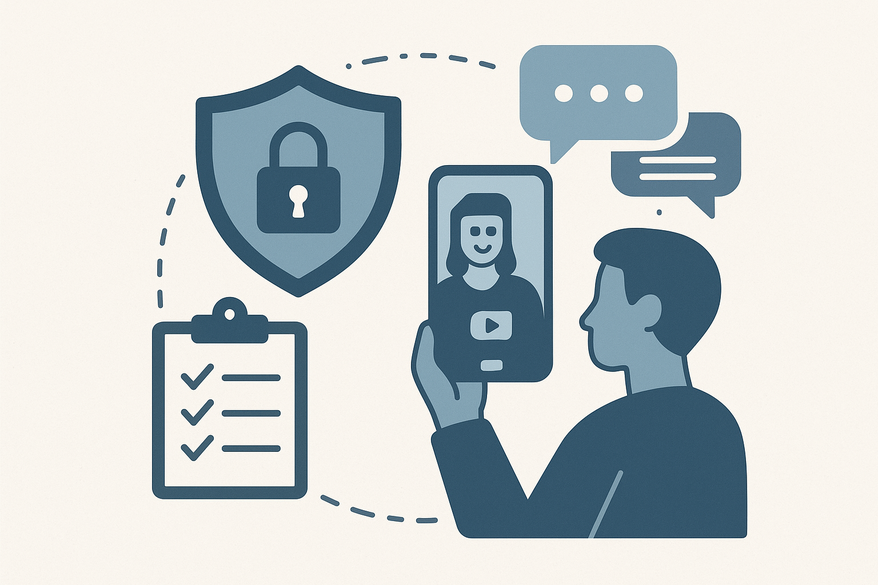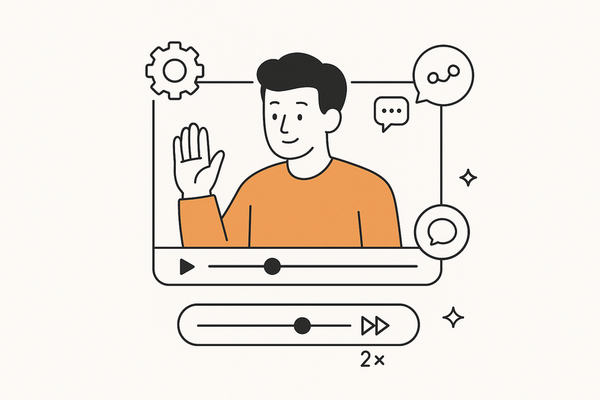Privacy Guidelines for Fake Chat Videos
Learn essential privacy guidelines for fake chat videos to ensure data protection in chat story content and maintain viewer trust.

Estimated reading time: 8 minutes
Key Takeaways
- Understand fake chat videos: their purpose, tools, and risks of exposing PII.
- Core privacy rules: avoid real PII, obtain consent, add clear disclaimers, and anonymize assets.
- Data protection principles: minimization, purpose limitation, transparency, and security.
- Actionable tips: AI-generated names/avatars, blur identifiers, and use a step-by-step privacy checklist.
- Legal compliance: follow GDPR, CCPA, platform policies, and defamation laws to stay safe.
Table of Contents
- Introduction
- Section 1: Understanding Fake Chat Videos
- Section 2: Privacy Guidelines for Fake Chat Videos
- Section 3: Data Protection in Chat Story Content
- Section 4: User Privacy Chat Video Tips
- Section 5: Legal Implications and Best Practices
- Conclusion
- FAQ
Privacy matters more than ever when you’re crafting engaging fake chat videos. These clips simulate messaging-app conversations, complete with animations, avatars, and sometimes voice acting. While tools like Capcut, Kapwing, or ClipGOAT let you build viral sketches or social commentary, they also carry the risk of revealing real names, numbers, or photos.
To help you create safe, legal, and trustworthy content, this guide covers simple yet powerful rules for data protection. Plus, see how Vidulk - Fake Text Message Story App can streamline anonymization with built-in privacy-friendly assets and automated storyline generation.
Section 1: Understanding Fake Chat Videos
Fake chat videos are crafted clips that mimic real text-message exchanges. They display message bubbles in sequence, timing animations to simulate typing, and often include sound effects or voiceovers. Creators use them for:
- Entertainment sketches: short dramas or misunderstandings between friends.
- Parodies of public figures: spoofing a celebrity’s texting style.
- Social commentary: illustrating ghosting in modern dating.
- Scam warnings: demonstrating phishing texts that try to steal info.
Popular editors like Capcut, ClipGOAT, and aicut automate themes, avatars, and text-to-voice. Yet, a single slip—say, a real phone number or profile photo—can expose private data. Always review your script and assets carefully before publishing.
Section 2: Privacy Guidelines for Fake Chat Videos
This section outlines core rules to prevent personal-data leaks and keep your content within legal and ethical bounds.
- Avoid real personally identifiable information (PII)
– Never use actual names, phone numbers, usernames, or profile pictures without clear consent.
– Replace real data with fictional names or generic avatars. - Obtain documented consent for real likenesses
– If you reference a real person, get written permission (email or signed form).
– Keep records of consent for legal protection. - Use clear disclaimers
– Add a visible overlay or caption: “This video is fictional” or “For entertainment only.”
– Place disclaimers at the start of your video and in descriptions. - Blur or remove potential identifiers
– Use editing tools to obscure phone numbers, timestamps, photos, and usernames. See our step-by-step anonymization techniques.
– Review each frame for hidden data. - Substitute pseudonyms and AI-generated assets
– Leverage AI tools or stock libraries for avatars and backgrounds.
– Generate random names to avoid matching real individuals.
Legal & Ethical Implications
- Regulations like GDPR (EU) and CCPA (California) treat chat data as personal information—noncompliance can incur hefty fines. See our in-depth legal review.
- Misrepresenting real people can lead to defamation or libel claims.
- Deepfake and synthetic-media laws in many regions require disclosure; always check local rules.
Section 3: Data Protection in Chat Story Content
Adopt these four principles to minimize risks of leaking private data:
- Data Minimization
– Include only details necessary for your story.
– Omit extra names, real locations, or metadata that don’t serve the narrative. - Purpose Limitation
– Don’t reuse actual chat records for unrelated videos.
– Collect data only for one project and avoid repurposing without consent. - Transparency
– Clearly state that content is fictional or dramatized.
– Transparency builds trust and prevents confusion. - Security
– Store any real or draft data in encrypted, password-protected folders.
– Delete unused drafts or original chat logs within 30 days of project completion.
Section 4: User Privacy Chat Video Tips
Follow these easy steps to safeguard user privacy in your chat videos:
Actionable Tips
- Generate names and avatars via AI or stock libraries—never import real user content.
- Secure written consent when referencing any real person’s likeness or story.
- Blur, crop, or mask phone numbers, photos, timestamps, and usernames in your video editor.
- Add a visible disclaimer: “All characters and events are fictitious.”
- Store all production files in password-protected folders and purge unused assets within 30 days.
Step-by-Step Privacy Checklist
- Confirm all on-screen text and images are fictional or generic.
- Review each frame at 100% zoom to detect hidden identifiers.
- Insert your disclaimer at the beginning and in the caption.
- Archive consent forms and proof of permissions in your project folder.
- Perform a final privacy review before hitting “Publish.”
Section 5: Legal Implications and Best Practices
Stay compliant by understanding relevant laws and platform rules.
Applicable Legal Frameworks
- GDPR (EU): strict rules on personal data, consent, and rights to erasure. See GDPR guidance.
- CCPA (California): rights to access, delete, or opt out of data sales. Read the CCPA overview.
- Deepfake/Synthetic Media Laws: require disclosure of AI-generated content in certain regions.
- Defamation and Impersonation Statutes: false statements about real individuals can lead to legal claims.
Platform-Specific Requirements
- TikTok: label synthetic media and handle takedown requests under its community guidelines. See TikTok synthetic media policy.
- YouTube: policies around manipulated media and a process for reporting privacy concerns. Learn more in their manipulated content policy.
Proactive Best Practices
- Regularly audit the privacy and content policies of your publishing platforms.
- Document every privacy measure, from data minimization to disclaimer placement.
- Establish a rapid-response process for handling privacy or defamation complaints.
Conclusion
By following these privacy guidelines for fake chat videos, applying robust data protection principles, and using clear user privacy tips, you’ll stay on the right side of the law. You’ll also build credibility, avoid fines, and foster trust with your audience.
FAQ
- What is a fake chat video? A short clip that simulates a messaging-app conversation using animated bubbles, avatars, and timing effects.
- How do I anonymize real chat data? Blur or remove PII, replace names with pseudonyms, and follow our step-by-step anonymization techniques.
- Do I need consent to use a celebrity’s likeness? Yes. Always obtain documented permission before referencing any real person.
- What are the risks of violating GDPR or CCPA? You could face significant fines, takedown requests, and reputational damage.
- Can I use AI-generated avatars without consent? Yes—AI or stock avatars avoid real-person likeness issues and simplify compliance.





